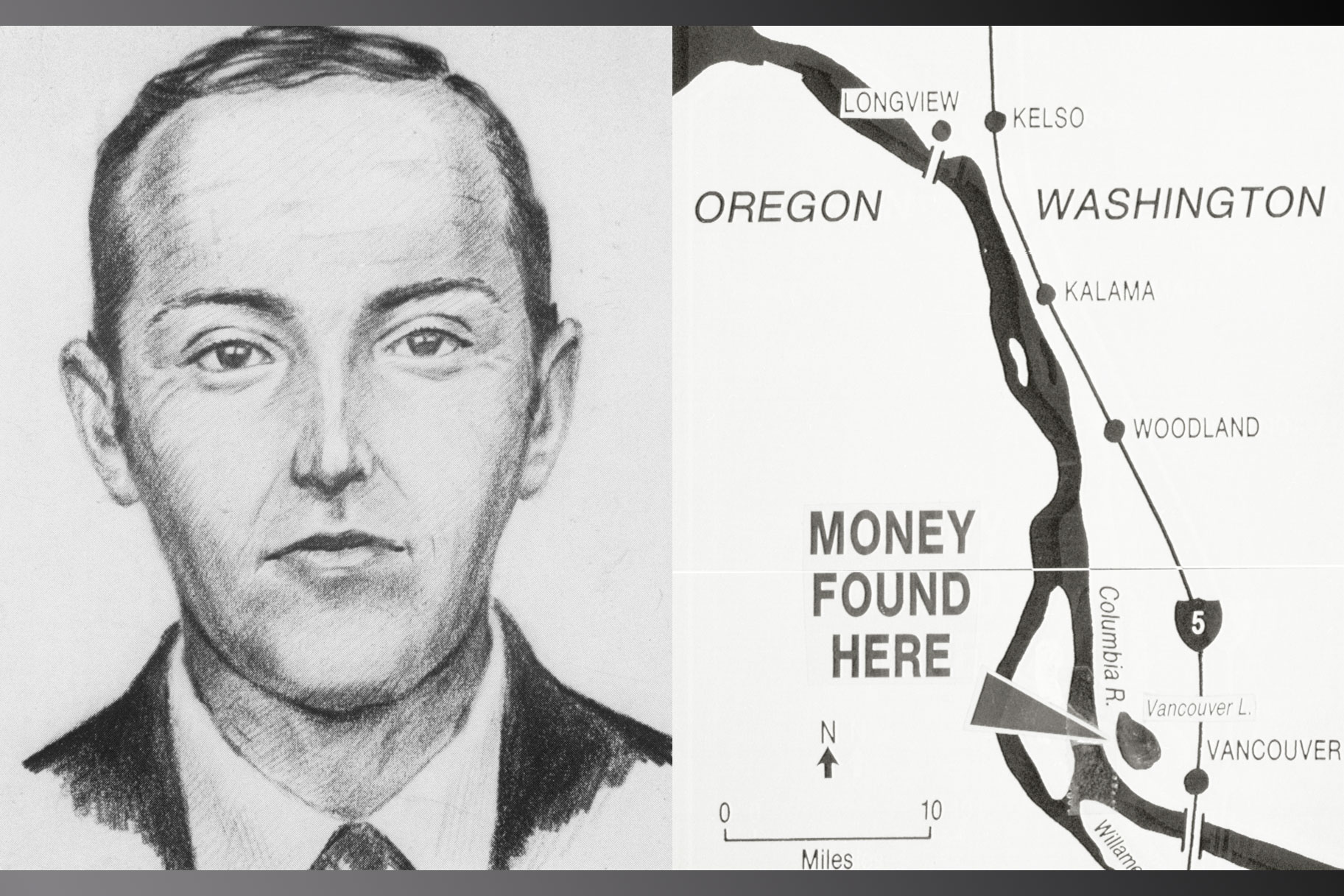Create a free profile to get unlimited access to exclusive videos, breaking news, sweepstakes, and more!
Plane Hijackings In D.B. Cooper's Era Used To Be A Lot More Common, And Some Even Considered Them 'Fun'
In the 1960s and '70s, skyjackings weren't that unusual and were often attempted in order to get a free trip to somewhere otherwise off-limits, like Cuba.

While the tale mystery man D.B. Cooper discreetly hijacking a plane, getting $200,000 in ransom money before parachuting his way to freedom (or death) sounds unique — and it was — skyjackings at the time were often considered just par for the course.
The legend of D.B. Cooper began on Nov. 24, 1971, when a man who identified himself Dan Cooper got on a plane from Portland, Oregon to Seattle, Washington. As HBO’s new documentary “The Mystery of D.B. Cooper” — which dropped on Tuesday to mark the infamous incident’s 49th anniversary — details, he passed a flight attendant a note saying he had a bomb, then opened up his briefcase for to show her the purported explosive device. He then demanded $200,000 in twenty dollar bills and four parachutes. The whole time, the passengers on board were unaware that they were part of a skyjacking. Once the plane landed in Seattle, authorities supplied Cooper with the ransom money and the parachutes and the passengers were let off the plane. The plane then took off again, under Cooper's instructions to fly to Mexico City. Somewhere between Seattle and Reno, Nevada, Cooper strapped on a parachute and leapt from the aircraft at an altitude of roughly 10,000 feet and into legend.
Whether he survived or not is unclear. His identity? Also unclear, though as the documentary shows there have been no shortage of people claiming to be him over the years. What is clear is that the event remains the only unsolved skyjacking in commercial aviation history. That is just one of the reasons that set it apart from other skyjackings, which were actually very common at the time.
As “The Mystery of D.B. Cooper” points out, the modern notion of airport security simply didn't exist back then, resulting in a plethora of skyjackings. Unlike 9/11 decades later, however, the skyjackings of the 1960s and '70s weren’t typically suicide missions or even done with an eye toward ransoms. Rather, the majority of the hijackers just wanted to be brought to a destination they otherwise couldn't go. So, when Cooper began his hijacking, the pilots at first dismissed it as something similar. Then, they saw the demand for cash.
“This one was different,” William Rataczak, who served as co-pilot on the flight Cooper hijacked, said in the documentary. “Because it was a hijacking demanding money.”
He said it wasn't uncommon for hijackers to be Cuban nationals "who wanted to return to their homeland” in the wake of Fidel Castro's communist revolution and the ensuing the U.S. embargo on travel and trade with the island nation.
“Everybody on the airplane would get a bottle of rum and a couple of cigars and got back on the airplane and flew home and thought it was really a fun thing,” Rataczak reflected with a laugh.
A 1968 issue of Time stated that more than 1,000 Americans visited Cuba unexpectedly as a result of the skyjackings. The piece, entitled "What to do if the hijacker comes," even offered readers a lighthearted "dos and don'ts guide" if they should end up in Cuba. It was a tongue-in-cheek response to a phenomenon that was becoming increasingly common.
In fact, there were 159 American airplanes hijacked between 1968 and 1972, Brendan I. Koerner, author of The Skies Belong to Us: Love and Terror in the Golden Age of Hijacking, told Vox in a 2016 interview.
As the book title states, he describes the era as the "golden age of hijacking.”
While Cuba-bound skyjackers often had hopes they would be welcomed in with open arms, they were often jailed or tortured instead, Koerner said. He wrote in a 2016 Wired piece that “Fidel Castro welcomed the wayward flights in order to humiliate the United States and earn hard currency.”
The epidemic was really only curbed once metal detectors and searches of carry-on luggage — procedures that seem common and obvious now — were put into place in 1973. It was a response to the escalation of violence; while earlier hijackings didn’t result in deaths, there were casualties by 1972, according to Vox.
“It was really a reaction to the fact that this epidemic of hijackings in America had just become too violent and unpredictable, and the airlines, in particular, finally had to relent and accept that they would have to inconvenience their customers in order to allay customer fears,” Koerner told Vox.
Just as the majority of the many skyjackings of the '60s and '70s were often described in an almost lighthearted manner, the Cooper hijacking was and is also often viewed in a positive light.
“There was a cult following for this guy immediately,” Cooper expert Eric Ulis, who investigates the case for History’s docuseries “The Final Hunt for D.B. Cooper,” told Oxygen.com. Ulis started a Cooper-themed event called CooperCon in 2018.
He said the fact that nobody was hurt on the plane or even freaked out — as they remained oblivious until they landed — has helped Cooper attain the anti-hero legend status he has now.














